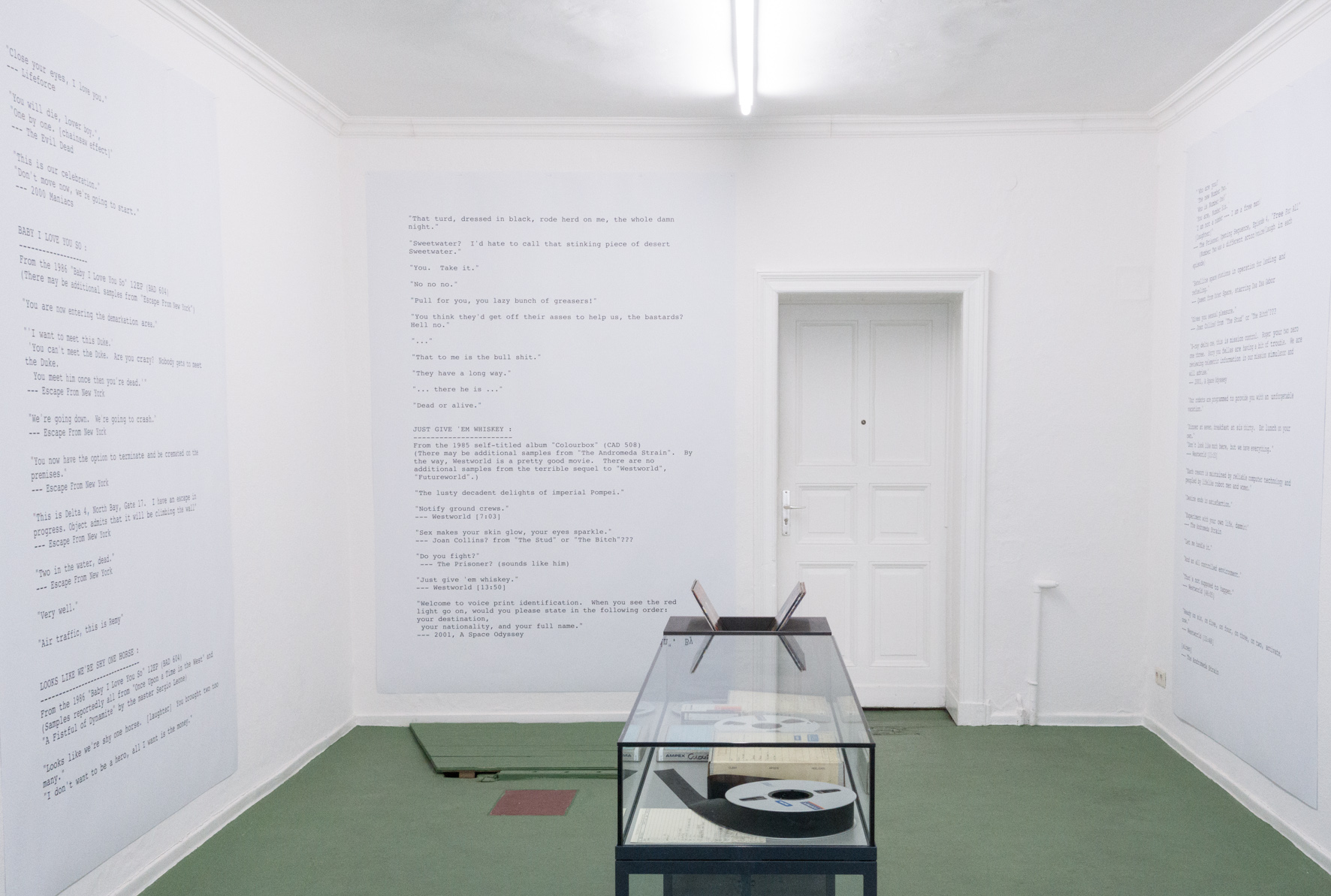Playback Room part I: Colourbox - Music of the group (1982 - 1987)
13 September–25 October 2014
This is the first in a series of exhibitions and events that aim to give a dedicated space to the playback of recorded music. It is considered normal that in order to see original works of visual art one can visit a museum. However there is no dedicated space or place where one can go to to hear the works of musicians with the studio sound quality that the original recording was made in.
Live music has dedicated spaces, whereas recorded music has none. This does not do justice to the fact that to many musicians the very essence of their work is the recorded final version of a song or album. Months of studio time have gone into creating a work with optimum sound quality. In contrast to this effort 99.9% of music playback is on commercial, domestic or portable devices not fit for perfect sound reproduction. Digital compression in recent years has caused a more and more wide-spread low sound quality in playback.
Undoubtedly music is a huge inspiration to visual artists, and many hold pieces of recorded music in the highest esteem. When attempts are made to bring music into art galleries, it is often done by using visual by-products, rarely by ‘showing’ the music in dedicated spaces equipped with the highest standard speaker systems. The Between Bridges project Playback Room is hoping to encourage a critical discussion of this divide.
For Colourbox - Music of the group (1982 - 1987) the larger space of Between Bridges will become a playback room equipped with a high-end hi-fi sound system. A sequence of 16 songs will be played. The actual carriers of the recordings will be on show in the entrance space of Between Bridges: a display of original mastering tapes, 2”, 1/2” and 1/4”, and the records, which were published by the independent label 4AD, London and were designed by the much acclaimed designer Vaughan Oliver, will be available to be handled by visitors. A list of transcripts of the original sound samples used by Colourbox will be displayed at the entrance on the gallery walls.
The nature of Colourbox’s way of working lends itself to this focus on recorded music since the group refused to perform live and was generally reluctant to mediate their work in forms other than the records they put out. Brothers Martyn and Steven Young together with Ian Robbins, Lorita Grahame and Debian Curry were pioneers of experimental pop music. They created an eclectic sound drawing from reggae and soul influences, beat-box driven hip-hop rhythms, blue-eyed soul, as well as a fusion of far-ranging influences spanning from classic R&B, to dub and industrial.
Using montages of analogue magnetic tape bits and experiments with tape machines, Colourbox were on the fore-front of sampling, which in it’s digital form would become ubiquitous in the course of the 1980’s. The band worked in a seeming contrast of pure artistic research in the studio and an anti-intellectual stance towards the outside world. The sometimes soul-inspired, sometimes clashing and degraded, at times harsh, sound qualities of their tracks stood apart from 4AD label mates Dead Can Dance, Cocteau Twins and This Mortal Coil.
The band had considerable success in the independent charts but didn’t cross over into the mainstream until 1987, when they embarked on a collaboration with A.R. Kane under the name of M.A.R.R.S. and released the single Pump up the Volume, which went on to become an international No.1 hit. Almost entirely composed of unlicensed samples of other’s music and sound pieces the song became the cause of long drawn legal battles and court actions. After this Colourbox stopped recording and never released music again.
Text: Wolfgang Tillmans









A 16 track CD and a limited edition double LP compiled by Wolfgang Tillmans was released by 4AD on the occasion of this exhibition.


Press on the exhibition:
Alex Needham, Wolfgang Tillmans to open music 'playback room' in Berlin gallery, theguardian.com 12 September 2014 (EN)
Wolfgang Tillmans im Interview: Wie stellt man Musik aus?, monopol, 17 October 2014 (DE)